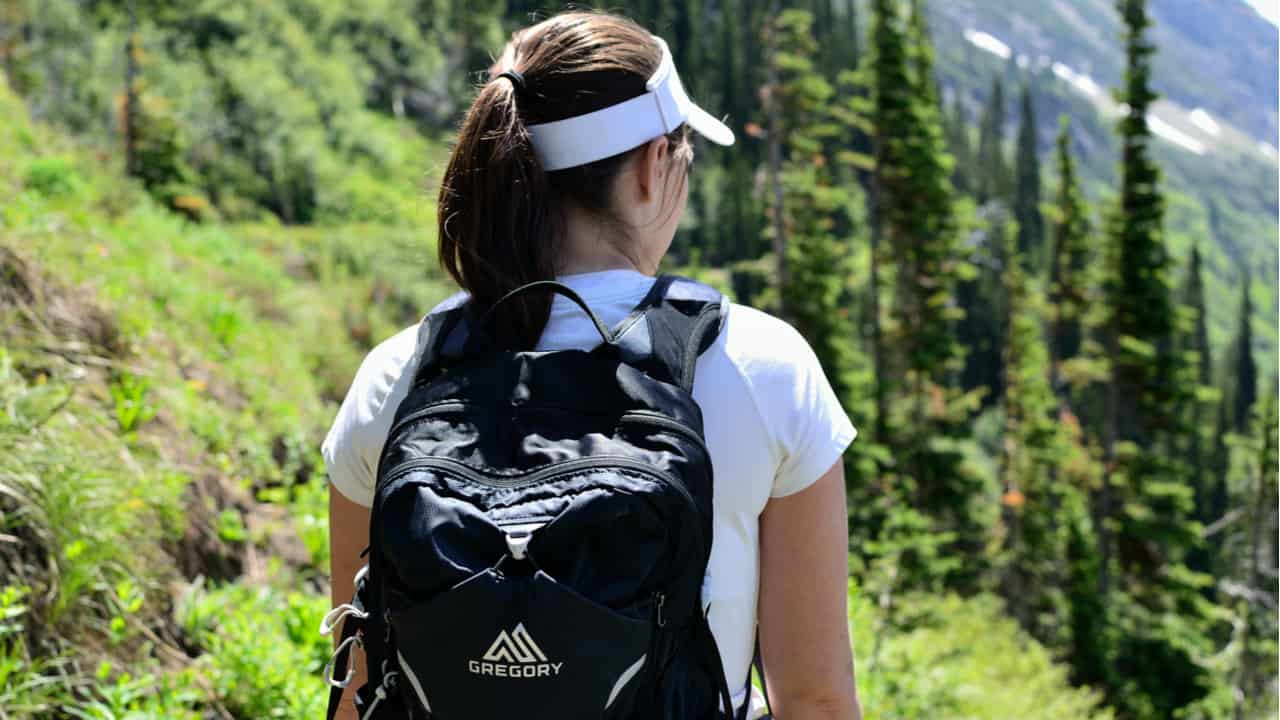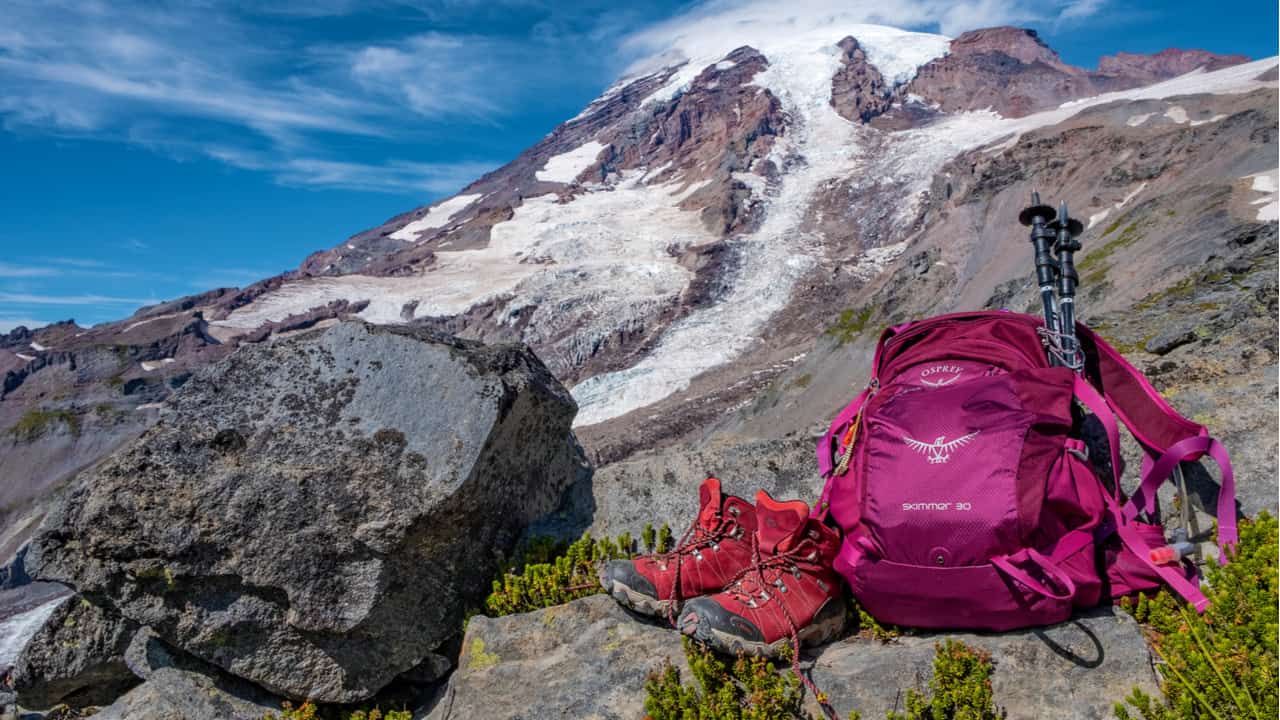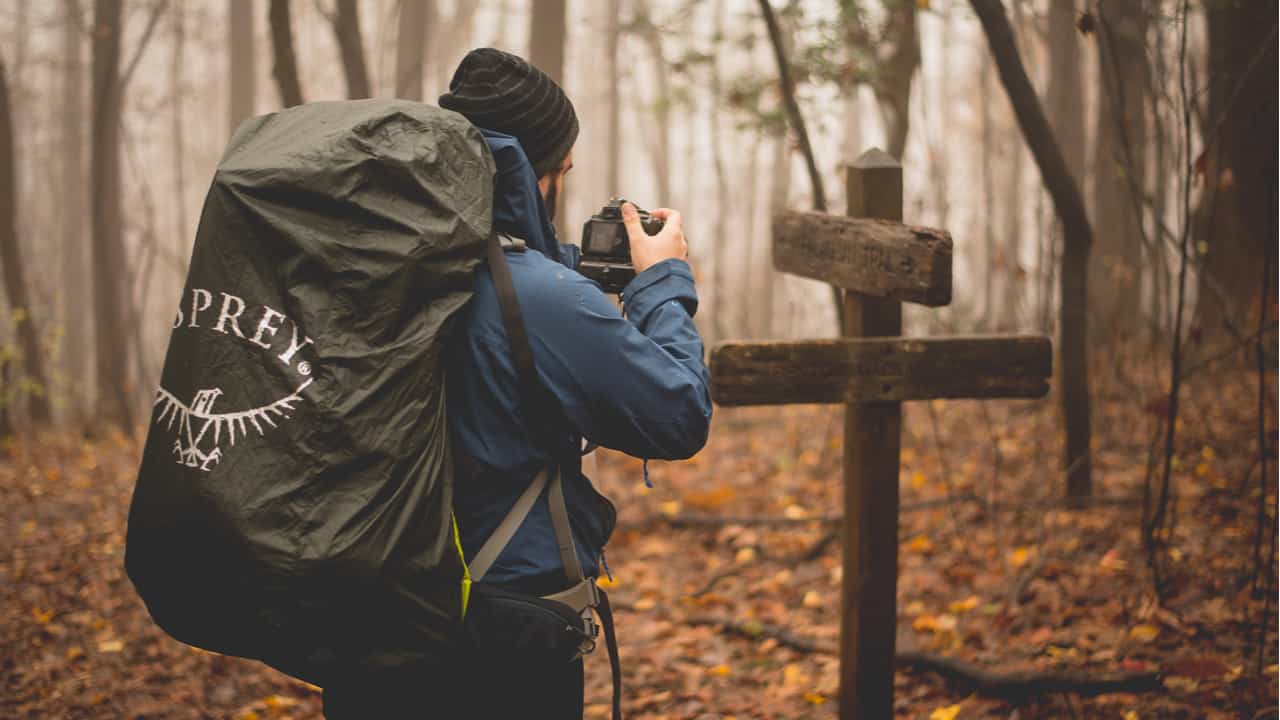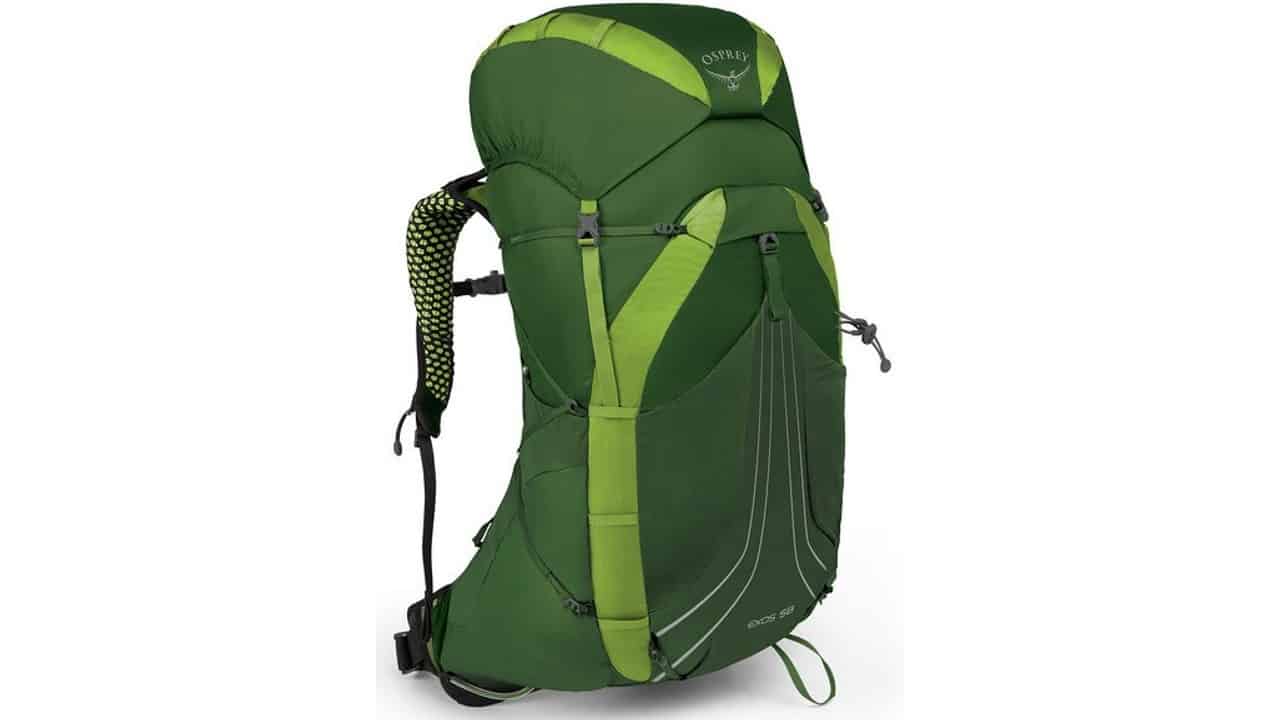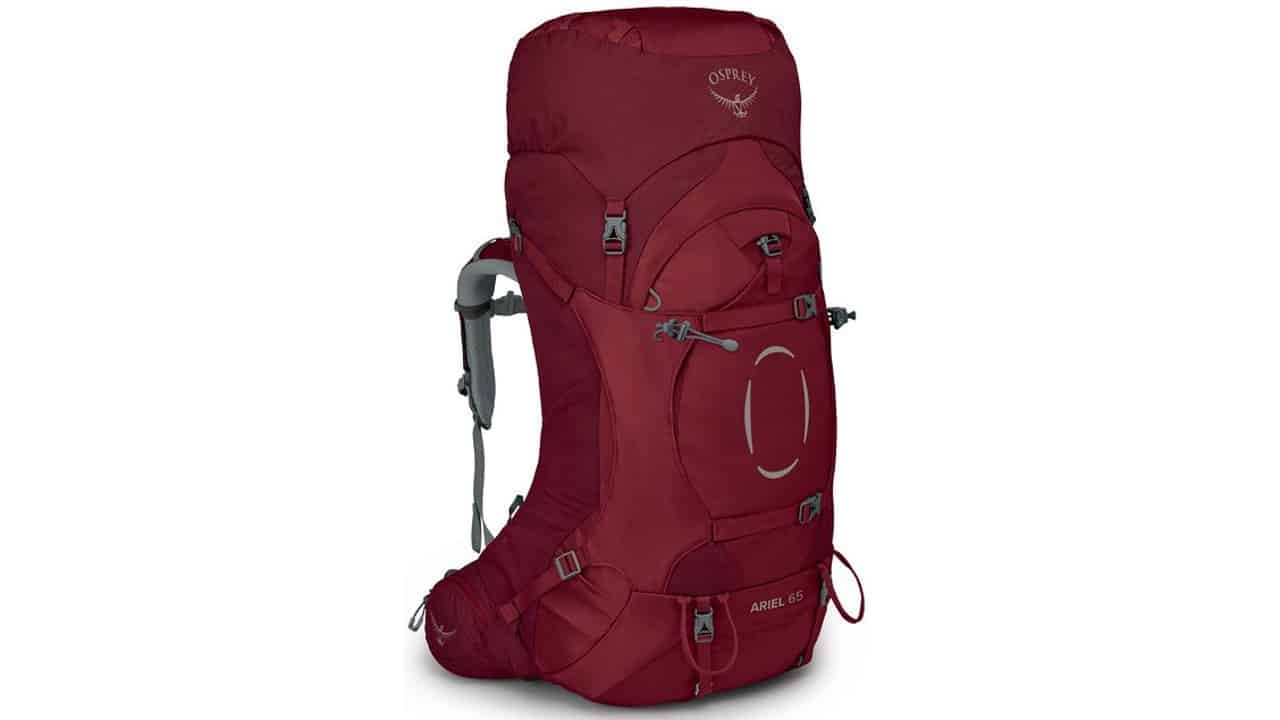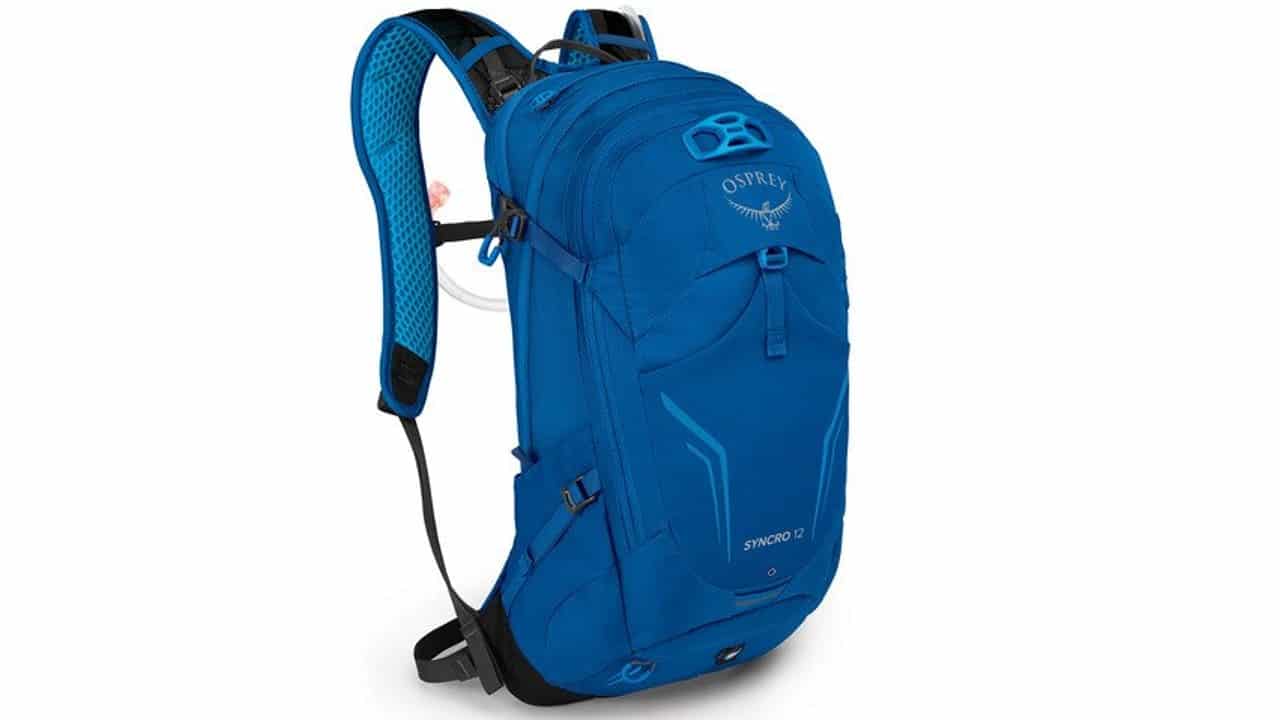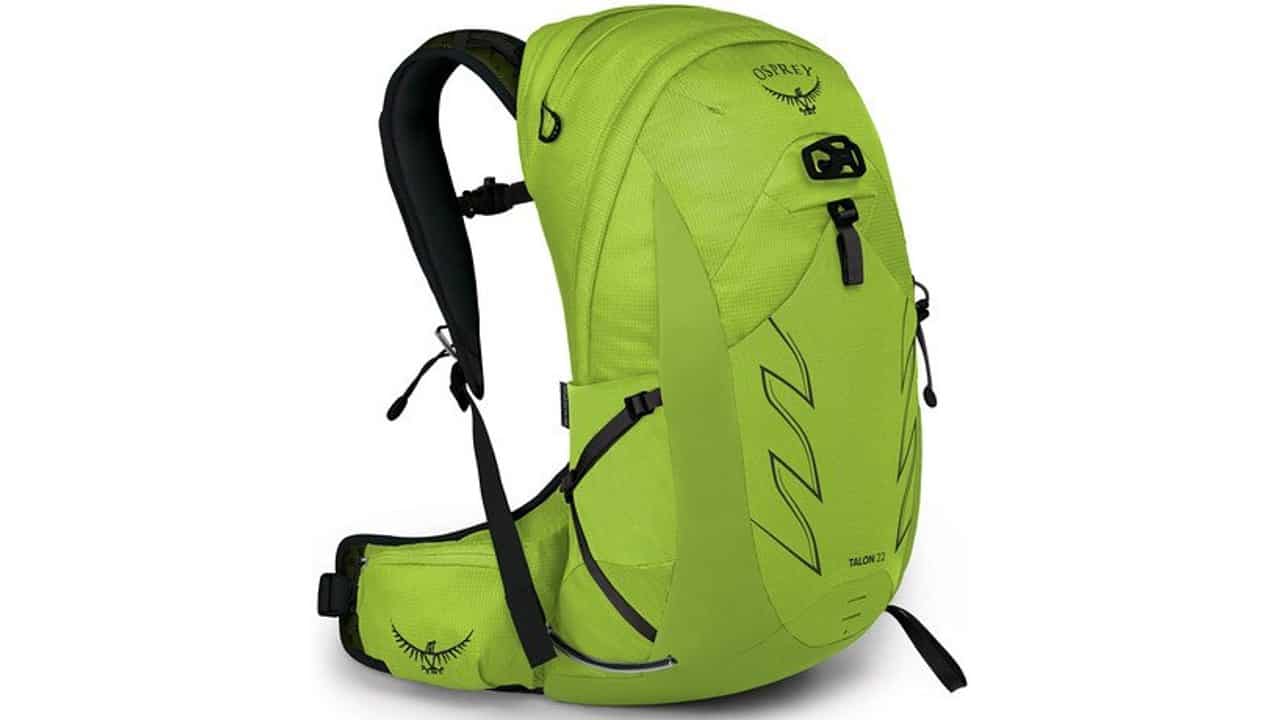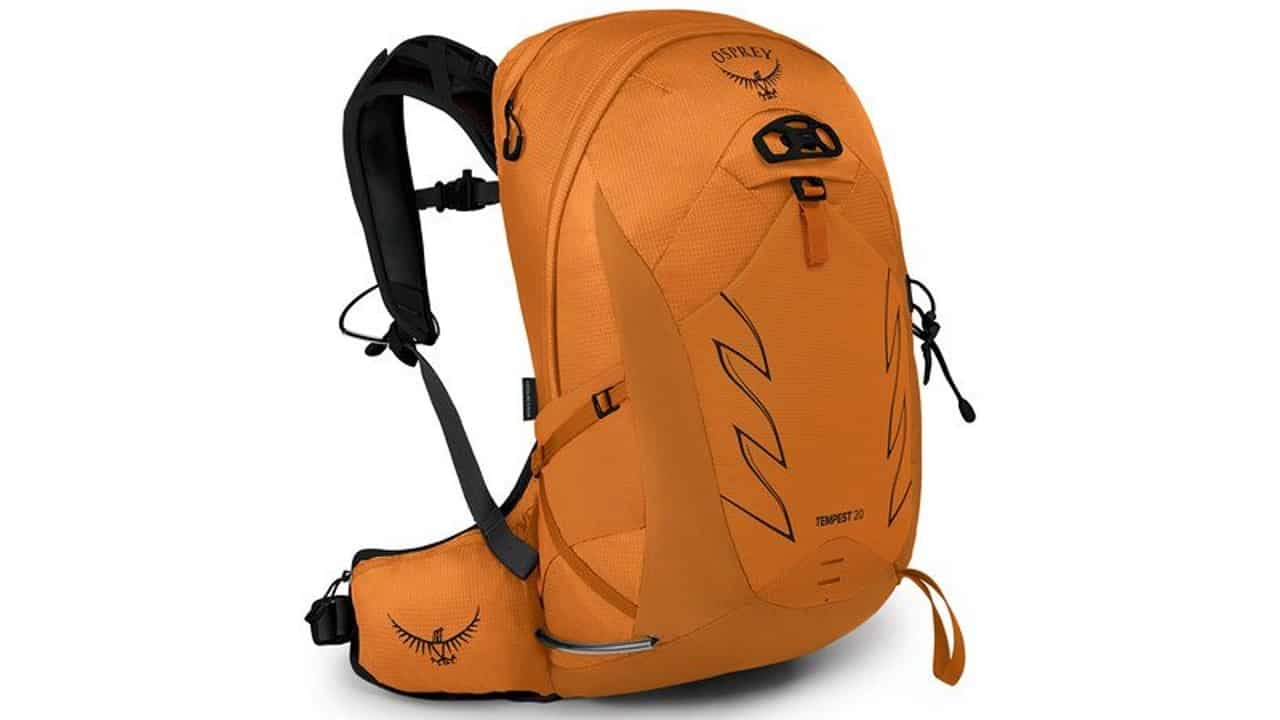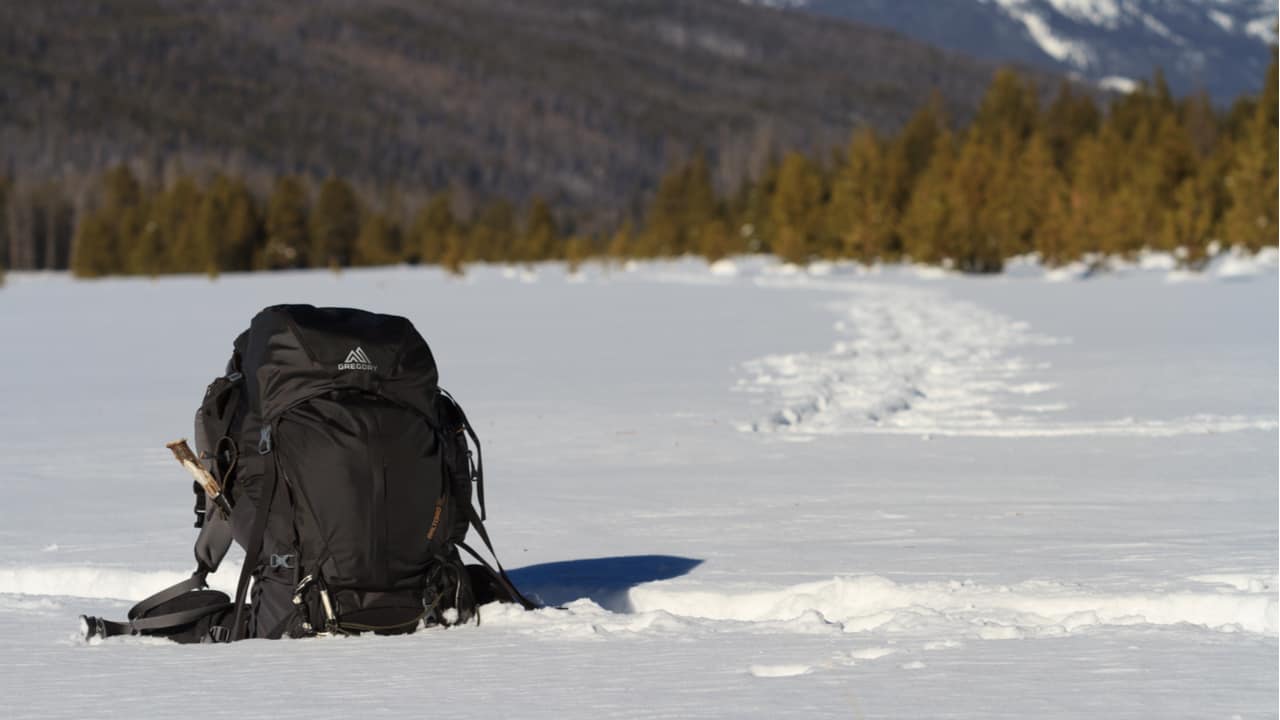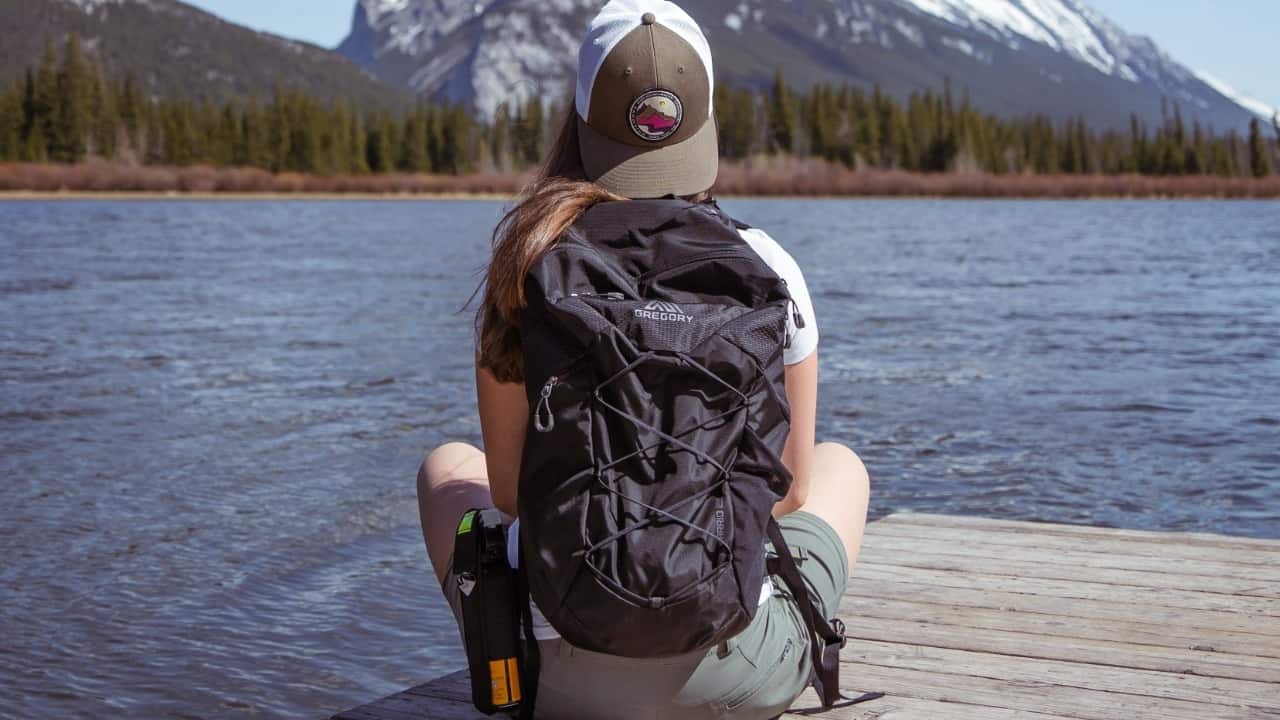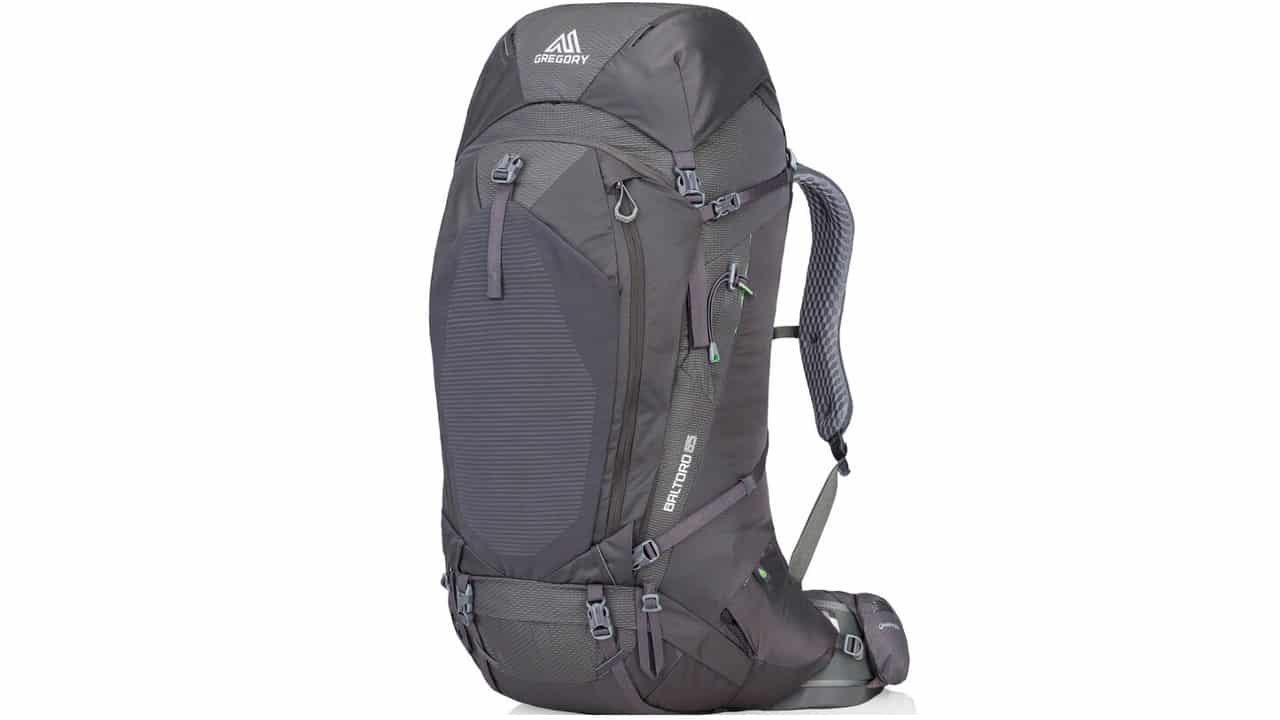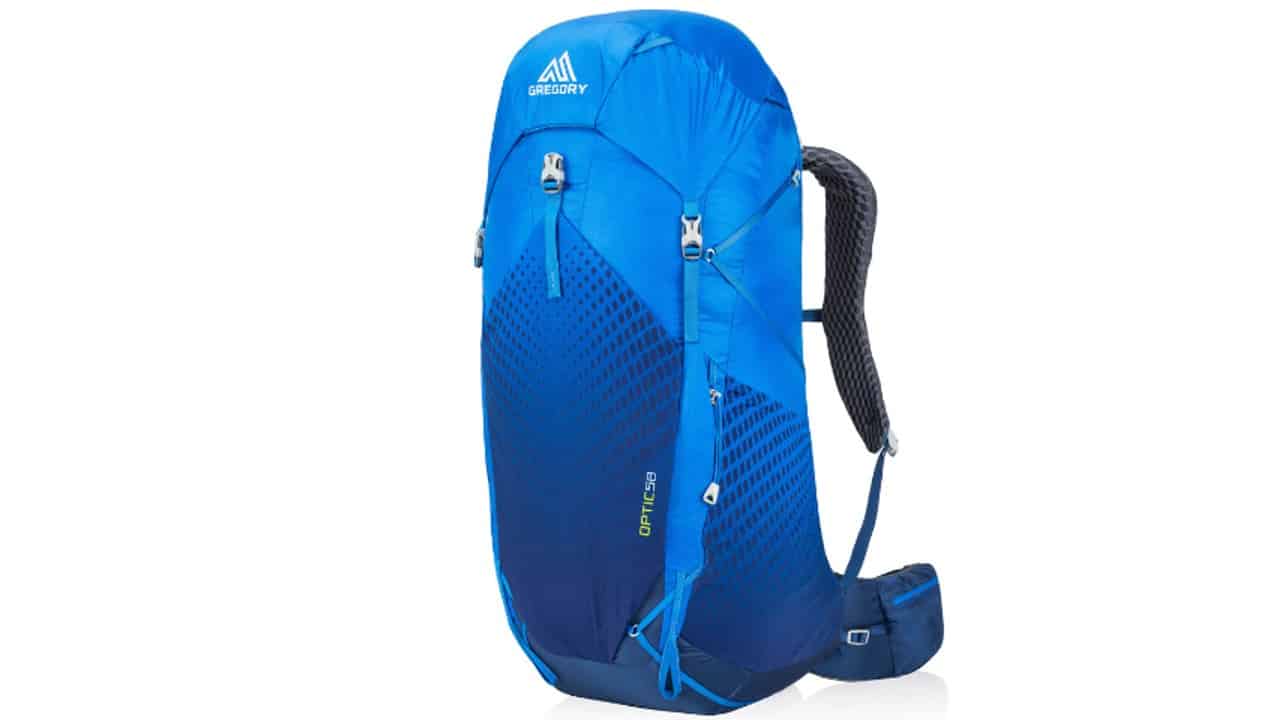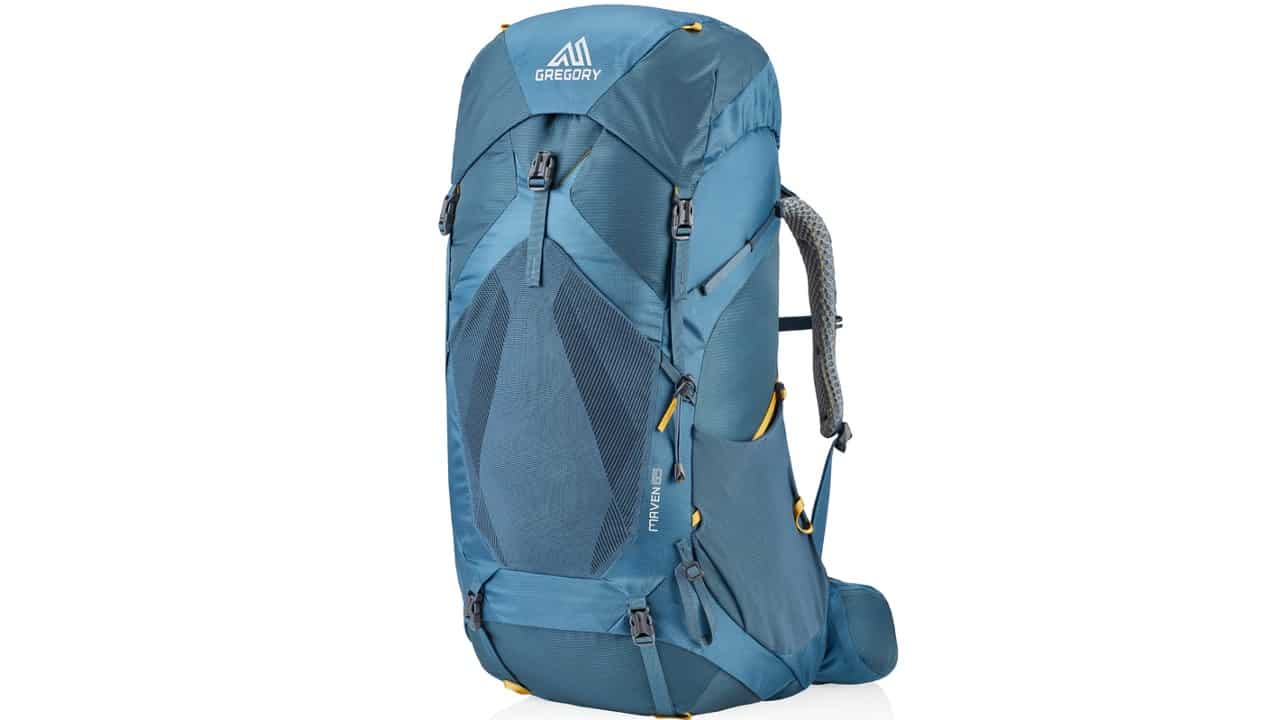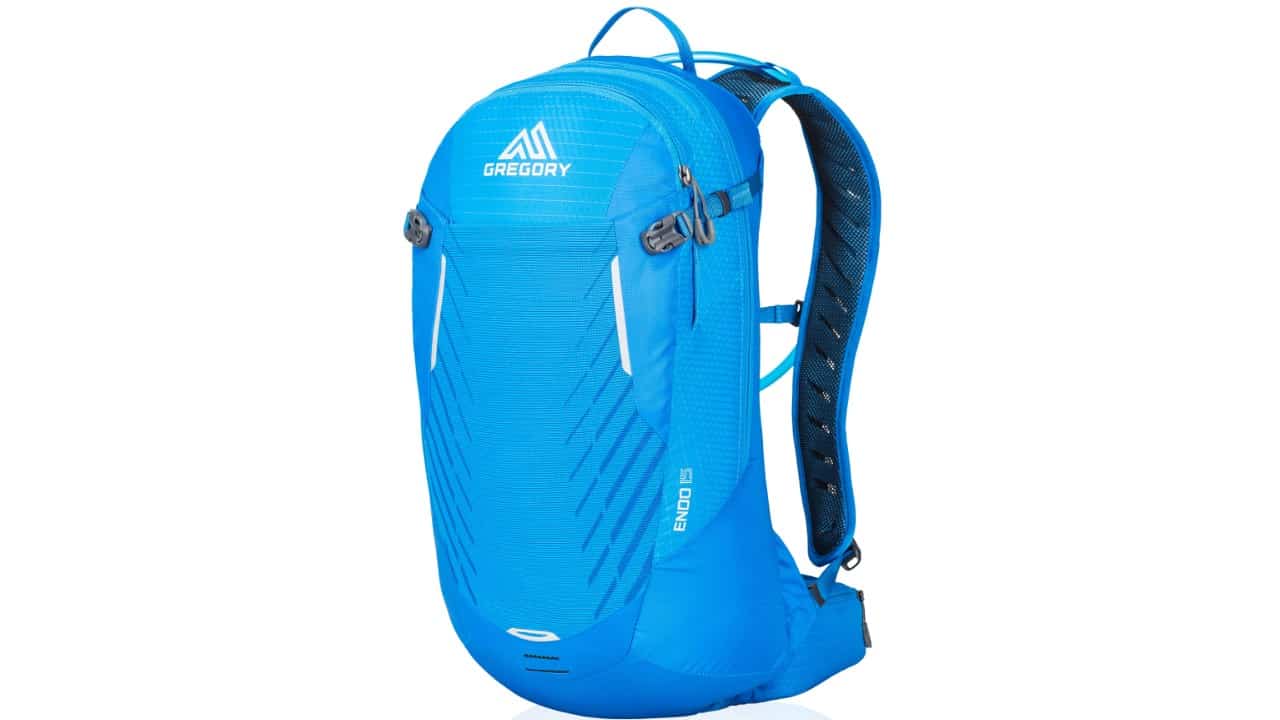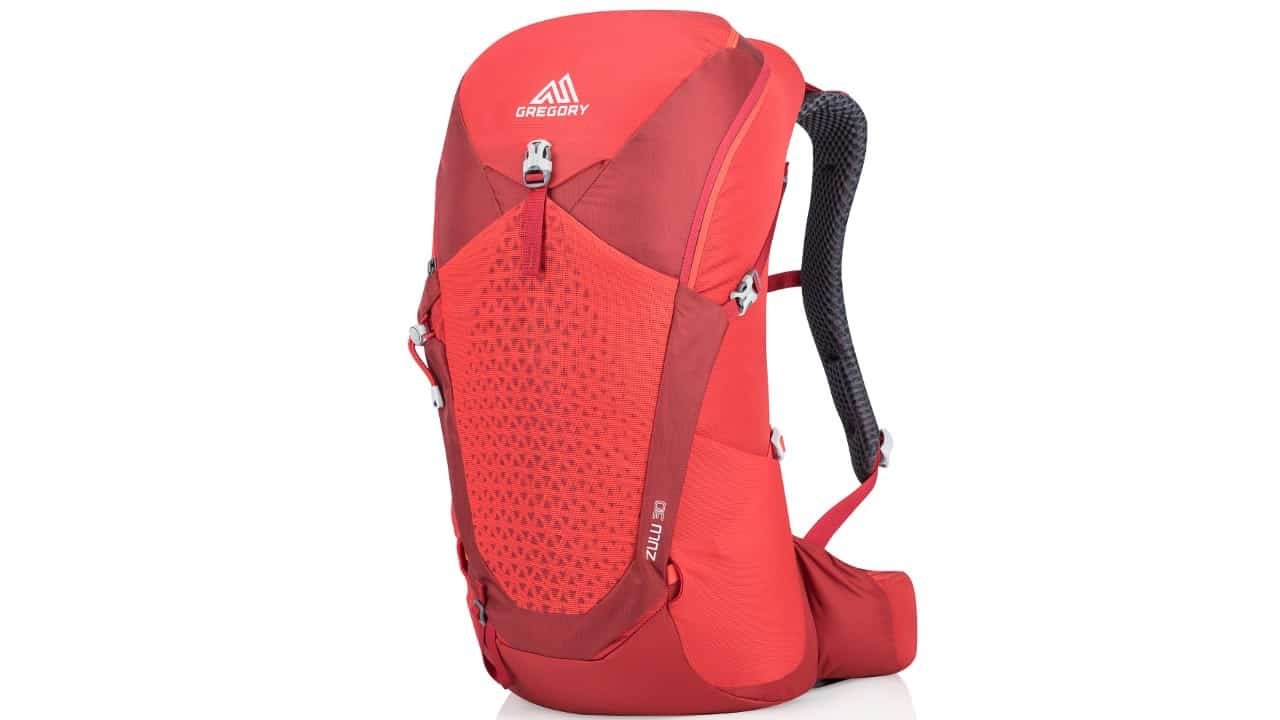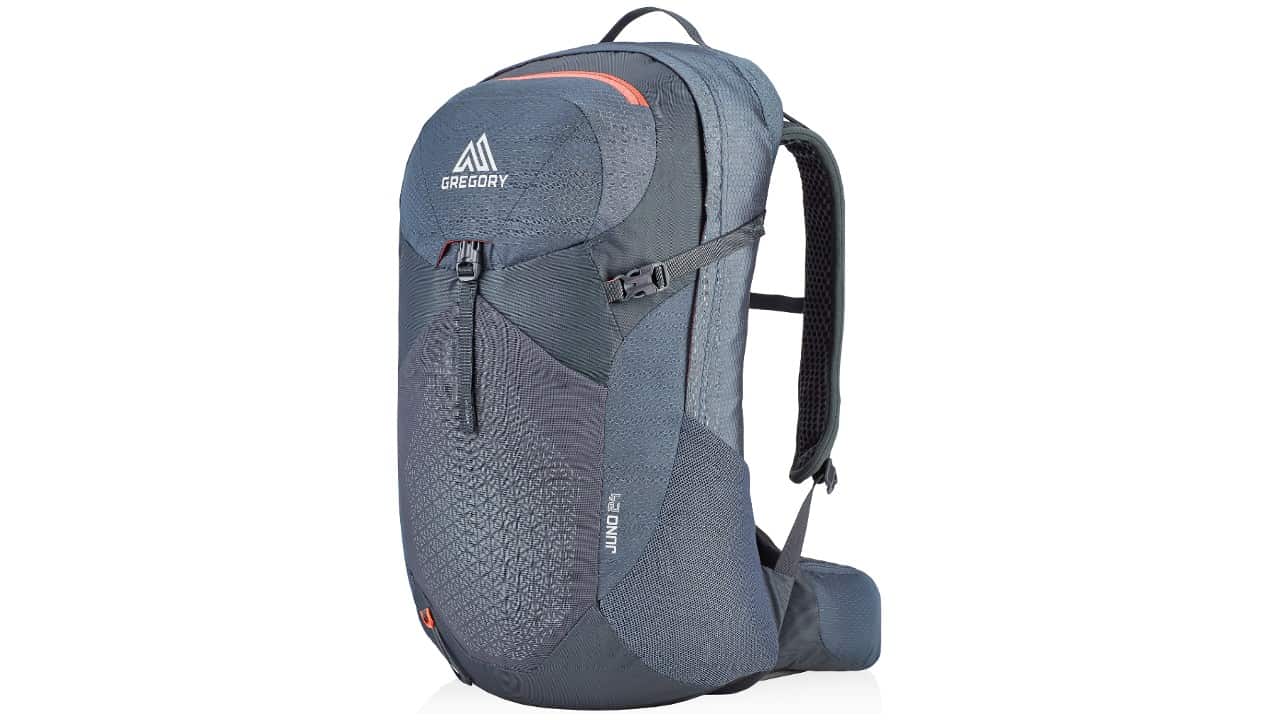Over the years, I’ve learned that the right backpack can mean the difference between an okay hiking trip and an amazing one. When it comes to backpacks, brands such as Gregory and Osprey have always been my favorites. I find each of these two brands to be a great choice for inexperienced and seasoned adventurers alike.
While most outdoor brands make all sorts of gear, Osprey and Gregory specialize in designing various types of backpacks. Both brands became famous for the quality and longevity of their products.
But which brand is better? Well, that’s for you to decide. After all, every outdoor lover has different needs and preferences.
To help you figure out which brand to buy, I’ll share my first-hand experience with Osprey and Gregory packs and compare their flagship products.
Osprey
About the Brand
Mike Pfotenhauer founded Osprey in 1974 in California. Pfotenhauer started out by making custom backpacks and daypacks.
Even today, Pfotenhauer inspects every single design bearing the brand’s name.
On top of launching innovative products and designs, Osprey has also developed several proprietary technologies.
The company’s custom molding hip belt technology is one of its greatest achievements. It allows hip belts to fit perfectly around the hips, making it easier to carry heavy loads.
Materials and Manufacture
Osprey’s backpacks are built to last. The brand’s exceptional craftsmanship is covered by its legendary lifetime warranty. Osprey’s warranty even covers packs that were made way back in 1974.
My favorite thing about Osprey’s All Mighty Guarantee is the fact that the company will repair any damage free of charge.
I like to evaluate how environmentally friendly the brand is when I research and review outdoor gear. I’d say that Osprey is one of the more sustainable and eco-conscious brands.
Many of the company’s products use high-quality recycled fabrics and PFC-free DWR coating. Moreover, all Osprey packs are vegan-friendly.
Best Osprey Products
Best Backpacking Backpack: Osprey Atmos 65 AG
Specs
- Volume: 65L
- Weight: 4.5 lb
- Main material: 100D X 630D Nylon Dobby
Pros
- Super comfortable
- Excellent ventilation
- Awesome pockets
- Durable
- Ergonomic design
Cons
- Not supportive for super heavy loads
Thanks to its excellent design and overall comfort, the Atmos is one of the best all-around backpacking packs. I’d also say it’s the best Osprey backpack overall.
I’ve used it on several 5-day hiking trips so far, and it has proven to be very reliable. I’m not surprised that the Atmos has developed a cult-like following among outdoor enthusiasts.
It boasts incredible ventilation and many useful features. But what really sets it apart from most other brands, including Gregory, is its one-of-a-kind anti-gravity suspension.
I like the fact that the hip belt is also suspended, and not just the back panel. This adds to the hip-hugging feel.
On top of helping spread the load more evenly, the suspension system lets out excess heat that tends to build under the hip belt and behind your back.
The plush, breathable foam shoulder straps are my favorite detail. They conform to my shape without being too soft. The fit of the pack is excellent and the design is truly ergonomic.
For hikes with loads under 40 lb, this is one of the most comfortable backpacks I’ve tried. However, I didn’t find it to be as supportive for super heavy loads. You should consider a different model if you plan to haul loads of 45 lb or more very often.
Still, when it comes to moderate loads, the Atmos has always distributed weight across my back and waist more than well.
The two oversized hip belt pockets should really come in handy. They are easy to open and close while you are walking, and they can easily accommodate a map, phone, and some snacks.
I have mixed feelings about the mesh water bottle pockets. They allow you to easily access your water bottle. But, if your water bottle is tall, it will encroach with your natural elbow movement.
There is also a stretchy “stuff it” pocket. It is great for awkwardly-shaped items such as fuel bottles and camp sandals.
Best Lightweight Backpack: Osprey Exos 58
Specs
- Volume: 58L
- Weight: 2.7 lb
- Main material: 420D High-Tenacity Nylon
Pros
- Comfortable for loads under 40 lb
- Great pockets and features
- Lightweight
- Intuitive design
- Inexpensive
Cons
- Not adjustable
If you are sure you don’t want a fully frameless backpack, but still want a lightweight backpack, the Exos is a solid choice. It features a relatively robust waist belt and a frame. And yet, it is way lighter than the average backpacking pack.
I found it to be great for backcountry trips. Although I was skeptical at first, the shoulder straps and the waist belt proved to be quite cozy.
The padding is extra thick in the area that runs over the front and the top of your shoulders, so the straps are comfortable even when you’re wearing minimal clothing.
The Exos allows you to comfortably carry 30 to 40-pound loads. When I carried 20 to 30 pounds of stuff in the pack, I didn’t even notice a difference compared to sturdier packs. The aluminum frame is pretty stout.
The Exos is very similar to the Gregory Optic. Both the Exos and Optic have a suspended back “trampoline” frame. However, the Gregory Optic has a Lumbar pad. Moreover, the straps on the optic are even cushier and thicker.
The Exos is packed with many convenient features. The stretchy mesh pocket on the back is my favorite one.
You can use it to keep smelly clothing away from the rest of your gear or to store items that you want to keep easily accessible. I used it for my frying pan and flip-flops. It’s great for unusually shaped items.
The pack also features an attachment on the shoulder strap and a stretchy band near the bottom. These allow you to attach trekking poles.
Truth be told, I find this feature to be a bit gimmicky. Storing your trekking poles on the side is more secure.
The Exos is not adjustable. However, it comes in three different sizes. I didn’t have a hard time finding a size that fits me well.
But, if you are taller than 6’4″ or shorter than 5’4″, you may not be able to find an Exos backpack that fits you comfortably.
Best Women’s Backpack: Osprey Ariel 65
Specs
- Volume: 65L
- Weight: 4.8 lb
- Main material: Nylon
Pros
- Durable materials
- Highly adjustable
- Well-cushioned shoulder straps and hip belt
- Great support under heavy loads
- Several access points
Cons
- Heavy
- Not so breathable
The Ariel is a very popular pack among the backpacking community. This line of backpacks was launched over two decades ago.
Osprey has continually tweaked and improved Ariel’s design, suspension, and features. The newest version of the Arial pack has exceptionally functional adjustability in the torso length, hip belt, and shoulder straps.
Unlike many other high-end packs, the Ariel isn’t over-engineered to the point of complexity. And yet, the Ariel handles heavy loads more than well. It carries exactly as a traditional backpack should.
But, if you are not regularly carrying a heavy pack, the dense foam may take some getting used to. The hip belt isn’t heavily shaped and it’s angled to fit women’s hips.
To stabilization and load transfer, the hip belt connects to the frame at multiple points. For comparison, most packs have a frame that transfers the weight only to two points on the sides or the back center of the hip belt.
The narrower shoulder straps make this heavy-duty backpack a great choice for smaller-framed women. They are small enough to the contours of someone who doesn’t have broad shoulders but supportive enough to withstand the weight of the backpack.
So that the load wouldn’t shift much as you walk over difficult terrain, the shoulder straps are securely connected to the frame.
The pack has foam cut-outs and a mesh cover on the back panel in order to improve breathability. Despite this, the Ariel doesn’t offer much ventilation. The pack keeps the weight close to your back, so no feature can magically create more airflow.
The Ariel has a classic feature set plus a few extras. There are a couple of attachment points that allow you to carry extra gear, a rain cover, and a large sleeping bag compartment.
Best Hydration Pack: Osprey Syncro 12
Specs
- Volume: 12L
- Bladder capacity: 2.5L
- Weight: 1.7 lb
Pros
- Very breathable back panel
- Excellent storage and organization
- Great comfort and support
- High-quality construction
- Lifetime Warranty
Cons
- Heavy
The Syncro impressed me straight away with its high-quality construction and versatile design. It excels in nearly every performance metric. It exhibits all the qualities I’ve come to expect from the brand’s products.
The pack features a top-notch hydration system, a comfortable and breathable back panel, and well-laid-out organization and storage options. I especially like the drinking hose release clip. It makes it very easy to fill or replace the water reservoir.
The storage layout includes plenty of overall volume for bulky items like a sweater or jacket and a few well-placed pockets. The pack’s comfortable carrying system is also praiseworthy.
I’ve used this backpack on numerous adventures, and I am yet to notice any significant wear or tear. However, its many features and tough construction make it one of the heaviest hydration packs I’ve ever tried.
If you need a lower-profile hydration pack for fast and light pursuits, this is not it. Still, the Syncro has earned my recommendation for doing a great job of balancing hydration performance, carrying comfort, and storage volume.
Best Daypack: Osprey Talon 22
Specs
- Volume: 22L
- Weight: 1.7 lb
- Materials: Nylon
Pros
- Separate hydration compartment
- Well ventilated
- Comfortable
- Fully adjustable
- Durable
Cons
- May run small if you are tall
The Talon has been Osprey’s flagship daypack for some time now. It’s one of the most comfortable daypacks I’ve tested, and It just keeps getting better and better.
The new version of the pack comes with an upgraded back panel. It features horizontal channels that allow vertical flex.
The new panel is also injection molded with die-cut foam. I tried the pack on a hot summer’s day and it did a good job of keeping my back cool.
The Talon’s flexible frame allows for a great range of motion. This is something I’ve rarely experienced with hip belt-equipped backpacks.
The Talon features a suspension style that is usually reserved for large backpacks. The suspension system keeps heavier loads well-distributed across the torso and the hips.
I am a bit concerned about the sizing, though. The Talon has enough adjustability to allow most people to optimize the fit, but it may run a bit short on longer torsos. If you want to buy this daypack, pay close attention to the size.
Best Women’s Daypack: Osprey Tempest 20
Specs
- Volume: 20L
- Weight: 1.95 lb
- Main material: Nylon
Pros
- Adjustable torso length
- Great features
- Comfortable
- Durable
- Lightweight
Cons
- The front stow pocket is small
The Tempest is a lightweight daypack that has most of the features of a fully-loaded, heavier backpack.
Even though it lacks an internal frame, the Tempest is impressively comfortable. The hip belt and the soft, flexible shoulder straps are seamlessly integrated to the back of this daypack.
So that you can customize the fit, the Tempest has an adjustable torso length. And, unlike many women’s daypacks, it comes in multiple sizes.
Osprey’s LidLock system is one of the best features of the daypack. If you are a cyclist or daily bike commuter, you can use it to securely attach your helmet to the pack.
Considering that it is a fairly small and lightweight daypack, the Tempest is quite versatile and durable. The beefy 420D nylon on the bottom of the backpack practically promises longevity.
The Tempest has only one major drawback: the expandable front pocket is a bit small. It can’t accommodate thicker layers.
Gregory
About the Brand
Wayne Gregory, the founder of this iconic brand, designed his first backpack at age 14. His passion quickly grew into a proper business. However, his first company went under.
Luckily, Gregory didn’t give up. He founded Gregory Mountain Products in 1977 in California.
Gregory’s packs are famous for their ergonomic and comfortable fit. Gregory was the first company to build packs in different harness, frame, and waist belt sizes.
Materials and Manufacture
To ensure the highest quality, Gregory field tests every single product. Most Gregory packs boast a meticulous design and durable fabrics. The company has also significantly reduced its carbon footprint by developing 40 to 50% recycled yet high-performance materials.
Gregory packs are covered by a limited lifetime warranty. The warranty doesn’t cover normal wear and tear, but Gregory will quickly repair any damaged pack for a reasonable fee.
The company has also launched a DIY Field Repairable Part Service to prevent old Gregory packs from ending up in a landfill. This is all great, but there is no doubt that Osprey has a superior warranty policy.
On average, Gregory’s backpacks are pricier than Osprey’s products. While they may be too expensive for budget-conscious adventurers, I think that most Gregory backpacks are still worth their price. But, if you consider both of these brands to be out of your price range, check out my post on the best backpacks for the Camino.
Best Gregory Products
Best Backpacking Backpack: Gregory Baltoro 65
Specs
- Volume: 65L
- Weight: 4.8 lb
- Main materials: 210D High Tenacity Nylon / 210D Honeycomb Cryptorip HD
Pros
- Handles heavy loads
- Durable
- Comfortable
- Easy access
- Feature-reach
Cons
- Waist belt pockets could be bigger
Like the Atmos, the Baltoro is one of the most comfortable packs I tested for extended trips. The Baltoro has fantastic accessibility and overall pack design.
The Baltoro looks a bit smaller than the Atmos AG, even though the two packs are the same volume.
But Baltoro’s load-bearing ability is far more impressive. Thanks to its plush padding and rock-solid suspension, I can always rely on it for hauling heavy loads. The Gregory Baltoro 65 makes big weights feel manageable.
The pack’s aluminum frame does a great job of transferring the load from the backpack to the waist belt. The next time I go on an adventure that requires carrying lots of heavy gear, the Baltoro will likely be on my packing list.
To ensure that your gear is organized and easily accessible, the Baltoro features great pockets and a top-notch access zipper. Still, in terms of extra storage, the Baltoro doesn’t have as much to offer as the Atmos.
I really like the well-designed shoulder straps. They are wide, nicely articulated, and ergonomically shaped.
The feel of the high-quality foam is also nice. The foam spreads pressure evenly across the surface area of the straps even with moderate pack weights. However, the straps might not be as comfortable for small or narrow-shouldered users.
The exceptional lower back support is one of the biggest reasons hikers love the Baltoro. You can remove it if it’s not your thing. But I feel that you would reduce the overall comfort of the backpack by doing so.
The Baltoro features two waist belt pockets. They are big enough to accommodate a chocolate bar, chapstick, small camera, but not all smartphones.
Best Lightweight Backpack: Gregory Optic 55
Specs
- Volume: 55L
- Weight: 2.5 lb
- Main material: 100D High Tenacity Nylon
Pros
- Great features
- Good value
- Very lightweight
- Easy to access items
- Breathable
Cons
- Fixed torso and waist belt
Are you looking to go light? The Gregory Optic is one of the best lightweight packs I’ve tested.
The Optic 55 features less structure in the suspension, as do all UL-type packs. The aluminum frame helps disperse the load weight thanks to its anti-barreling support and leaf-spring lumbar pad.
This backpack can offer a comfortable ride if you streamline your kit. But I wouldn’t load it up with heavier loads.
Even though it’s a lightweight model, the Optic comes with fully padded shoulder straps and waist belt.
The waist belt and the shoulder straps are made of open mesh that wicks moisture and breaths well enough. The AeroSpan suspension also allows heat to escape from the back panel.
The Optic has one of the best feature sets. It was really easy to get used to the removable top-lid, zippered hip belt pockets, and water bottle pockets.
I also liked the stretchy mesh front pocket. As it allows for easy access, I used it to stash my rain jacket. The Optic also includes a storm flap.
The only complaint I have is regarding the lack of adjustability. The waist belt and shoulder straps are fixed. Moreover, you don’t have a huge range to play with.
However, maximum adjustability is unnecessary if you get the right fit. The backpack comes in three different sizes.
Best Women’s Backpack: Gregory Maven 65
Specs
- Volume: 65L
- Weight: 3.4 lb
- Main material: Nylon
Pros
- Adjustable torso and hip belt
- Easy access
- Fully-featured
- Comfortable
- Supportive
Cons
- Mesh pockets lack durability
The Maven is a lightweight backpack that offers a comprehensive feature set and supportive suspension. Its frame does a great job of transferring weight from the soldiers to the hips.
This backpack is suited for getting a custom fit thanks to its adjustable torso and hip belts.
Essentially, this Gregory pack doesn’t sacrifice anything to save weight. It allows you to comfortably carry loads over 30 lb all day. You won’t experience any sagging.
However, I must note that this backpack has a prominent lumbar curve. I recommend you to try it before you buy it because this feature causes immediate discomfort in some users (although it fits most people).
The foam padding on the frame, hip belt, and shoulder straps is perforated for a bit of ventilation. The hip belt is of a one-piece design that holds the backpack weight close to the torso and wraps smoothly around the hips.
Even though it weighs only 3.5 lb, the Maven has a rear stash pocket, sleeping bag section, hip belt pockets, dual side pockets, two-pocket removable lid, and a variety of lash points and compression straps.
The big side pockets can easily accommodate two 1L water bottles. Whether they are full or mostly empty, the stretchy mesh pockets will hold your items securely.
However, I am a bit concerned about the durability of the mesh used on the side pockets as well as the back pocket. It seems like an awkwardly-shaped item could easily put a hole in the mesh.
Users really love the large zippered-side access opening. It runs almost the entire length of the backpack.
Best Hydration Pack: Gregory Endo 15
Specs
- Volume: 15L
- Bladder capacity: 3L
- Weight: 2 lb
Pros
- Ventilated mesh back panel
- Adjustable hip belt height
- Comfortable suspension
- Great storage features
- Large water reservoir
Cons
- Bladder not easily removable
- Heavy
The Gregory Endo boasts an adjustable suspension system, a large 3-liter 3D-Hydro water bladder, and outstanding storage and organization.
This pack includes zippered hip belt pockets, an external zippered valuables pocket, and a front zippered compartment in addition to the big main compartment that houses the removable tool pouch and bladder. Its clearly designed storage features are absolutely praiseworthy.
The adjustable hip belt is also impressive. Dialing in a comfortable custom fit was a breeze. The back panel is ventilated and its mesh lining does a good job of wicking moisture.
However, all of these cool features come with a weight penalty. The Endo is even heavier than the Osprey Syncro.
Moreover, I had a bit of a hard time removing, cleaning, and refilling the hydration bladder. It is more difficult to use than Osprey Sunyco’s hydration reservoir.
Other than this, I have no complaints. There is no doubt that the Endo is an excellent heavy-duty pack for carrying camping equipment, bike tools, and hiking gear.
Best Daypack: Gregory Zulu 30
Specs
- Volume: 30L
- Weight: 2.6 lb
- Main material: 210D High-Tenacity Nylon
Pros
- Comfortable
- Well-ventilated back panel
- Plenty of useful features
- Good value for money
- Adjustable
Cons
- The thin straps and lightweight fabrics lack durability
When it comes to men’s daypacks, Gregory’s products are not as impressive as Osprey’s. The Zulu, one of Gregory’s most popular products, is a solid day pack, but it’s nothing flashy.
The Zulu still does well against most competitors. The pack’s sophisticated suspension is excellent; it greatly improves overall comfort.
As a dedicated day hiker, I appreciate the well-ventilated back panel and the carefully tailored features. But considering the fact that the pack is a bit on the heavy side, I think that the construction should be more durable.
I like the pack’s hiker-centric feature set. It even has a rain cover; you’ll find it behind the stretchy “shove-it” pocket. All the features on the pack, including the full-function compression straps, are largely intuitive.
Best Women’s Daypack: Gregory Juno 24
Specs
- Volume: 24L
- Weight: 1.9 lb
- Main material: 210-Denier Honeycomb Cryptorip Nylon
Pros
- Durable construction
- Intuitive and useful pockets
- Very comfortable
- Excellent back ventilation
- Versatile
Cons
- Only one size
The Juno is a women’s daypack that replicates the feeling and movement of a proper backpack. It is the right choice for hikers who prioritize security and comfort.
Of all the daypacks on the market, the Gregory Juno has one of the best-ventilated back panels. It also has thick but flexible shoulder straps and a wide, comfortable hip belt.
The pack’s semi-flexible suspension system does a great job of distributing weight. To help you keep your stuff organized, the Juno comes with a full array of intuitive pockets.
It’s also one of the most durable daypacks. Its thick nylon fabric is reinforced in all the right places.
I am a bit puzzled by the fact that the pack comes in only one size. Even though it’s a highly functional daypack, it might not be the best fit for outlier sizes.
Takeaway
If you are looking for a more affordable but still highly functional backpack that will last for decades, go with Osprey. I use a 35 liter pack that does me all year except for winter when I need to carry more gear. It is a few years old and still as good as new.
Personally, I find Osprey to be a slightly better brand. I appreciate the practicality and comfort of Osprey’s backpacks. But Osprey’s “All Mighty Guarantee” is what seals the deal for me.
Keep in mind that all of this is coming from someone who always tries to pack light. If you want a bigger backpack that can carry heavier loads, I think Gregory is the better option.
With all of this said, I am sure that you won’t be disappointed no matter which brand you choose.

I love hiking, backpacking, and camping. From the Camino de Santiago to the West Highland Way in Scotland or simply a great day hike on the weekend. Hiking refreshes me, my mind, and keeps my body reasonably fit. So far I have walked three Camino routes and many other long distance hikes in the UK, Canada, and around the rest of Europe. One of the best was my hike up Ben Nevis.

